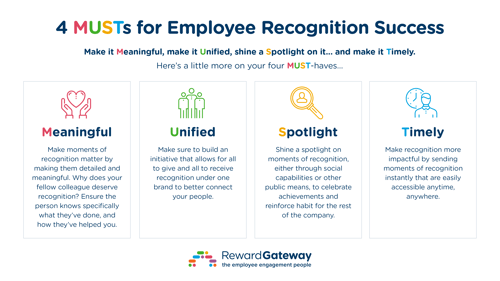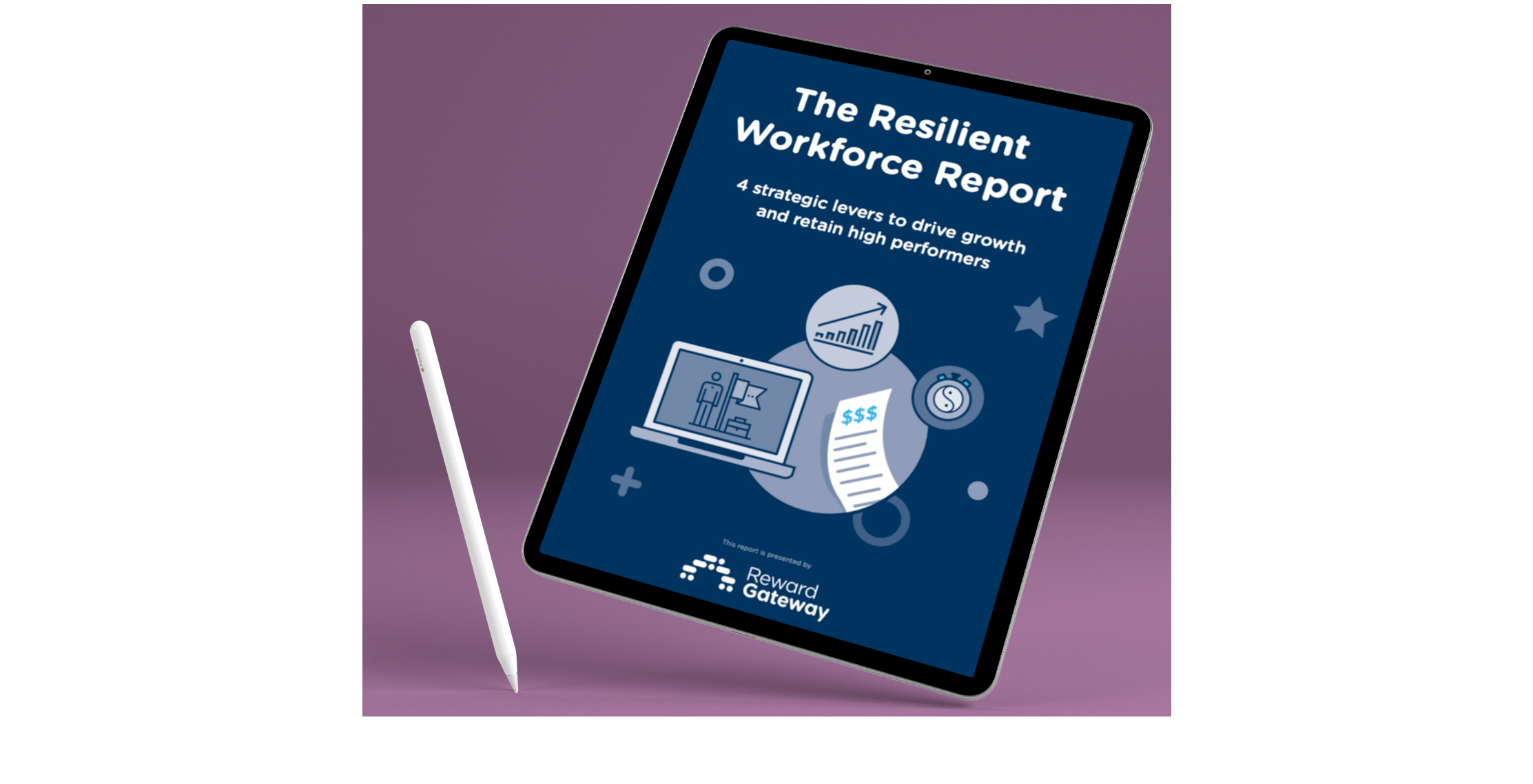Employee wellbeing has become a key metric of success in many workplaces – and a leading consideration factor for job seekers. When employees don’t feel supported or struggle with the pressure of their job, this can negatively impact your business.
Mercer’s Global Talent Trends report 2022-2023 found that the percentage of employees who feel energized at work dropped from 74% in 2019 to 63% in 2022 – and the number of burned out (or at risk) employees rose from 63% to 81% in the same time period.
Reward Gateway’s own research found that 20% of respondents in the U.S. felt that the last few years have had lasting negative effects on their wellbeing.
This is where resilience comes in to help employees deal with stress and unexpected challenges.
Resilience defines how well and how long someone (or something) can survive (and thrive!) through tumult and stress. A particularly resilient employee is one who has stuck it out through significant organizational changes, whether in terms of strategy or staffing – or both.
But resilience doesn’t just manifest out of thin air. Employers must support, nurture and respect employee wellbeing or stress mounts and resilience withers.
To help ensure your team stays resilient and happy, we’re looking at four proven ways organizations can build and nurture staff resilience in the workplace.
| 1. Recognize and reward your staff |
| 2. Promote healthy communication to facilitate better working relationships |
| 3. Create a safe work environment |
| 4. Plan ahead to sustain staff resilience |
1. Recognize and reward your staff
Acknowledging your team for their positive results on a daily basis builds up their confidence, keeping them motivated and loyal. In turn, this leads to better performance and higher levels of engagement. A Gallup study found that the latter accounts for significant increases in productivity, work quality and even profitability.
When you’re thinking about ways to recognize your employees, it can be difficult to narrow down your options. Reward Gateway has four MUSTs for employee recognition success: Make sure it’s meaningful, unified, shines a spotlight on achievements and is timely.

- Setting up a tailored employee reward and recognition program
- Highlighting individual and team results with meaningful moments on a daily basis
- Offering promotions, extra skills training or new job titles
- Giving staff flexible working hours or extra time off
- Awarding one-time bonuses or more frequent monetary rewards to let rewards build up for a special purchase
- Tickets to events like concerts, sports matches, theater shows or the cinema
- Company-branded swag themed to seasons, holidays or internal marketing campaigns or projects
2. Promote healthy communication to facilitate better working relationships
Open communication and honesty make staff feel both up-to-date and involved in the company’s mission and development.
You’ll first want to make sure you’re leading by example by encouraging open communication. Start by creating a work environment where everyone feels comfortable sharing honest feedback about their colleagues’ and their own work.
 Building a culture of frequent manager-employee one-to-ones is among the best and easiest ways to improve communication in your organization. Managers are on the front lines (so to speak) of employee morale and wellbeing, so it’s crucial that they ask open-ended questions to gauge the temperature. For example:
Building a culture of frequent manager-employee one-to-ones is among the best and easiest ways to improve communication in your organization. Managers are on the front lines (so to speak) of employee morale and wellbeing, so it’s crucial that they ask open-ended questions to gauge the temperature. For example:
- What do you think is going really well? (What do you think isn’t going well?)
- What are your biggest challenges?
- How can I best support you in meeting your goals?
This is extra valuable for employees who rely on others for motivation. Knowing that someone is there to offer support and listen to their challenges can make all the difference.
Tip: Don’t forget to set boundaries. Establishing clear limits helps prevent potential conflicts among your team members and allows them to express themselves freely.
3. Create a safe work environment
 It’s not just about communicating freely and recognizing everyone’s efforts – the way you feel at work also matters. Whether it’s setting rules and expectations in the workplace or creating a space of support and trust, you need to take employees’ emotional wellbeing into account to help your people handle big changes.
It’s not just about communicating freely and recognizing everyone’s efforts – the way you feel at work also matters. Whether it’s setting rules and expectations in the workplace or creating a space of support and trust, you need to take employees’ emotional wellbeing into account to help your people handle big changes.
After all, having a resilient workforce is all about building strong relationships between employees and managers, where everyone feels secure and respected – without exceptions.
When large shifts happen in our organizations, there are two key areas that are often overlooked while we’re busy juggling the unexpected:
- Employee mental health: Give your team access to resources or even a counselor to help them get through difficult times. The ideal scenario is gradually building a culture where people can openly talk about the challenges they’re facing at work and get solutions or help from their teammates.
- Stress management: Lots to do here! The simplest thing? Encourage employees to take breaks throughout the day. These can be both physical (e.g. going out for a quick walk at lunch) and mental (e.g. chatting with a colleague over a cup of coffee).
4. Plan ahead to sustain staff resilience
Poor risk management is what causes most projects to fail. But being unprepared when faced with change or unexpected challenges can also impact overall staff wellbeing and increase your turnover.

So let’s take a moment here: Do you have a risk or change management plan in place?
If not, it’s time you prepared one.
Once you’ve identified the potential risks, assess each risk in order to determine its impact. Consider the impact of the risk both within your organization and on the individual level. You’ll also get the chance to decide how to mitigate them and reduce the potential impact of a risk.
Once you have all the necessary details in place, it’s time to implement the plan. This could include setting up a communication strategy so that your staff feels supported and informed throughout the process.
Simply put, everyone will know exactly what to do once a change happens and no one will be taken aback.
Remember to take the time to develop staff resilience practices that align with your team’s culture and goals. It may be difficult to apply all of the above methods from day one, but every step in the right direction is a win for you, your people and your business.
At Reward Gateway, we can show you the tools needed to start cultivating a more resilient workforce. Get in touch with our engagement consultants to learn more:

%20(1).jpeg) Alexandra Powell
Alexandra Powell


